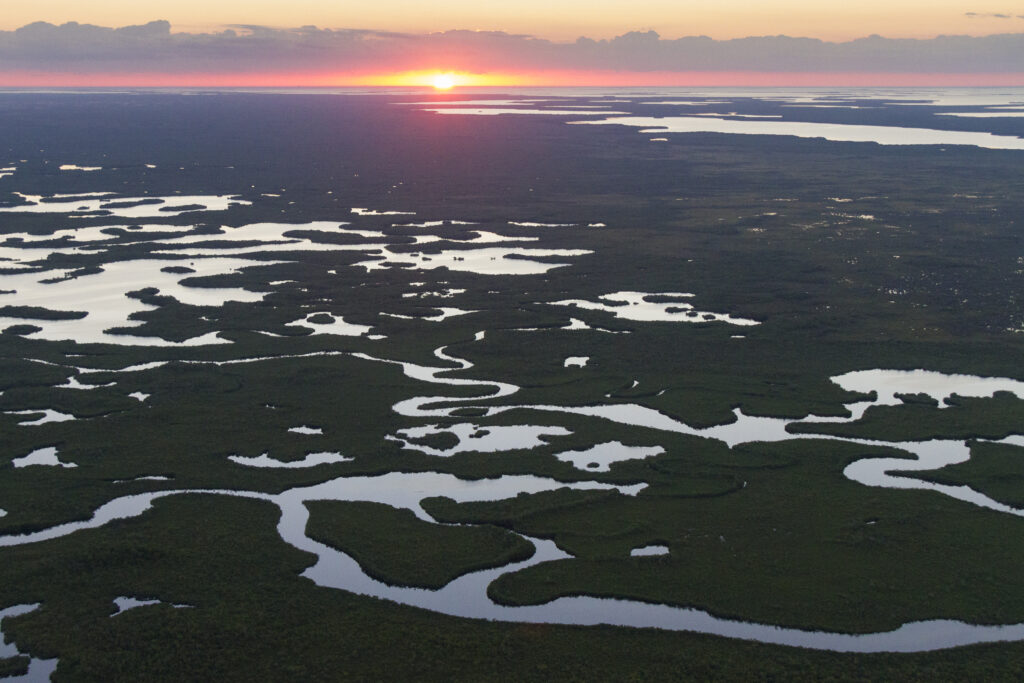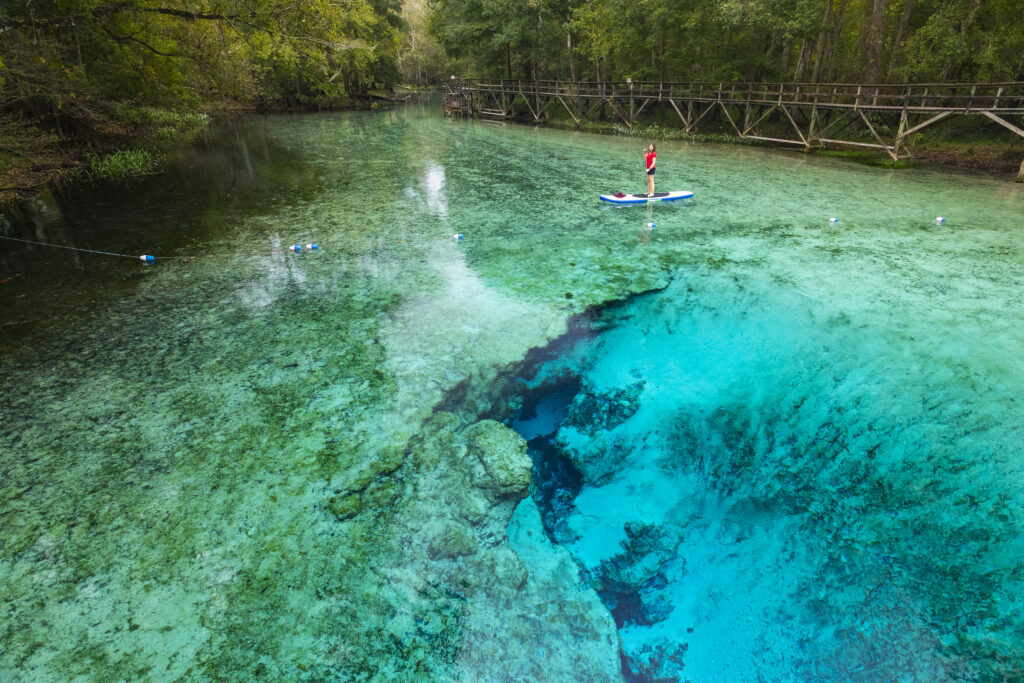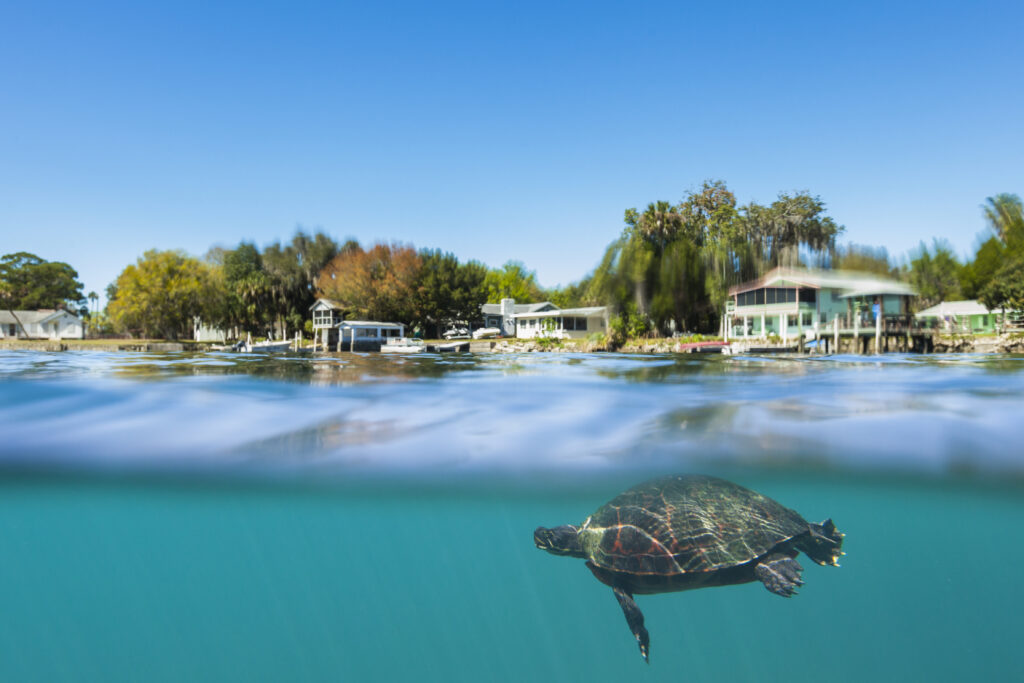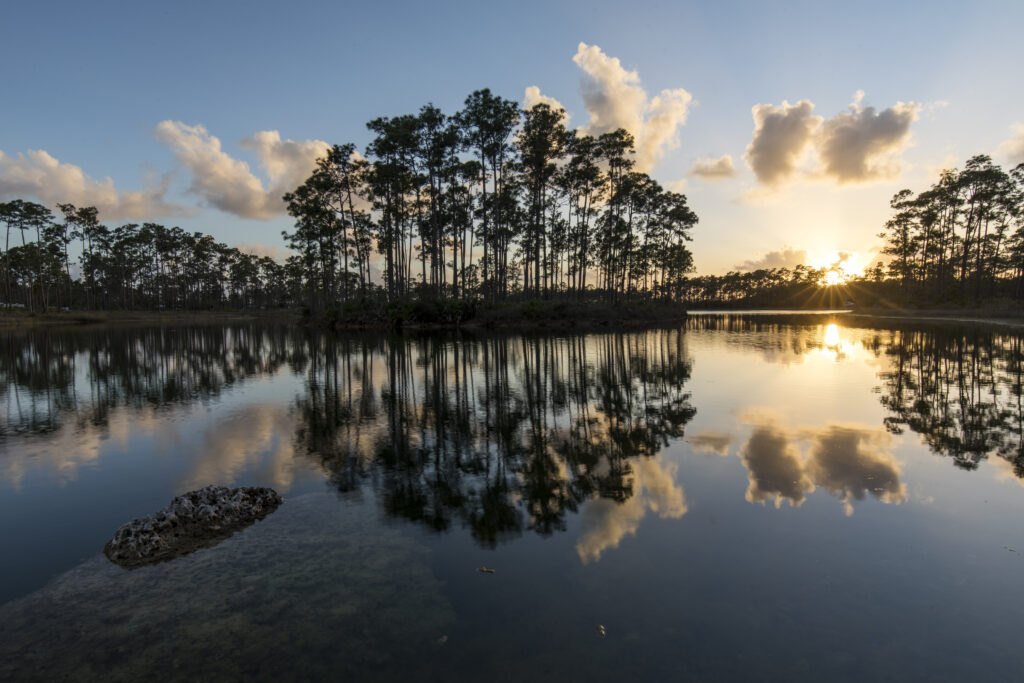The Unexpected Benefits of a Protected Corridor
A new study found that protecting the Corridor also helps conserve Florida’s water resources

Whether or not you realize it, Florida’s water touches you every day. From the refreshing tap water you drink to the crystal clear springs you swim in, the Sunshine State’s water is an essential resource for all Floridians.
While the main goal of the Florida Wildlife Corridor is to protect and connect critical passageways for wildlife to travel safely throughout the state, it turns out a protected Corridor benefits more than just the land and species that call it home — it helps Florida’s waters, too.
The University of Florida Water Institute developed the Florida Wildlife Corridor Water Benefits Report, commissioned by the Live Wildly Foundation and Archbold Biological Station, to determine just how much the Corridor helps water resources.
Here’s what they found:
Protecting the remaining 45% of the Corridor would nearly double the protection of many of Florida’s water resources, such as springsheds, lake shorelines, and critical groundwater recharge areas used for water supply.
Live Wildly Facts: A springshed is an area of land that provides water for springs, similar to a watershed.
Fifty-five percent of the Corridor is protected right now, leaving 45% still vulnerable. The study found that if the rest of the Corridor remains unprotected and becomes developed, then these resources may be diminished, or even lost forever. Conserving the remaining Corridor, which the study refers to as “Opportunity Areas,” would increase the number of protected first-magnitude springs, such as Wakulla and Rainbow Springs, by nearly 25%, and more than double the number of second- and lower-magnitude springs. It would also double the number of conserved swamps and marshes, adding a total of 2 million acres of protected swamps and 500,000 acres of marshes.

The Corridor protects Florida’s springs, rivers, estuaries and wetlands, including swamps and marshes.
Live Wildly Facts: An estuary is the area where rivers and oceans meet.
Over half of all Florida’s springs, major river corridors and wetlands are protected by the Corridor. These aquatic ecosystems provide benefits for people and wildlife across the state.
- Springs: More than half of Florida’s springs lay within the Corridor. Besides providing recreational waters for swimming, snorkeling, tubing and kayaking for locals and tourists, the springs’ warm temperatures also provide a healthy habitat for fish, turtles, frogs and manatees.
- Rivers: Around 62% of the length of Florida’s major rivers, including St. John’s, Apalachicola, Peace and Suwannee Rivers, run through the Corridor, with about half in protected areas. Healthy rivers create natural passageways for people to paddle and fish, and iconic wildlife like manatees to travel safely. Rivers also provide habitat for an extensive number of flora and fauna, such as vertebrates, insects, fish, crustaceans and mollusks.
- Estuaries: More than half of Florida’s wetlands, including salt marshes and mangroves, are protected by the Corridor. These areas supply habitats for aquatic organisms and fish species and recreational opportunities for fishing and water sports. They also protect fish habitats and serve as critical buffers for land protection from hurricanes and erosion. Mangroves, seagrass beds and salt marshes help mitigate pollution, storing buried carbon and trapping potential greenhouse gas emissions from the soil.
- Wetlands: Sixty-three percent of marshes and 42% of swamps are protected by the Corridor. These are key for water storage, flood mitigation, water quality, wildlife habitat, biological productivity, and even carbon sequestration — which all provide economic benefits to the state. Protecting smaller wetlands is especially critical, as they provide more habitat and ecosystem value per-unit-area.
Live Wildly Fact: Marshes in the New River, Apalachicola River, Myakka River and the Upper St. Johns River would benefit the most from preserving the remaining unprotected Corridor.
These water resources protect many of Florida’s at-risk species.
The Corridor’s protected areas support at-risk aquatic invertebrates in the Big Bend and Panhandle areas and provide critical pathways for vertebrates, including fish and reptiles, to move throughout the state. Many remaining Corridor areas would protect a high number of at-risk species, like endangered mussels in the Suwannee River.

What else is needed to protect Florida’s water resources?
Conserving the Corridor will not fully protect Florida’s water resources. We need to do more to help secure the future of Florida’s rivers, lakes, streams and springs to ensure healthy water quality and quantity for years to come. The Live Wildly Foundation continues to work with conservation partners such as Archbold to learn more about what is needed to protect the Corridor.
What can YOU do?
Keep learning about the Florida Wildlife Corridor – because the state of the Corridor is central to the health of the state’s economy and ecology. Get out and explore the many beautiful spots that have (or haven’t) been discovered – and take your friends and family along! Visit our Live Wildly crew and partners at upcoming events and volunteer opportunities – AND, share your support of protecting #wildFlorida with Live Wildly gear to support the Corridor wildly. Together, we can connect and protect the entire Corridor, and keep our state’s water resources bubbling. Keep an eye out for local conservation opportunities in your neighborhood and follow along @LiveWildlyFL for opportunities to get more involved.


